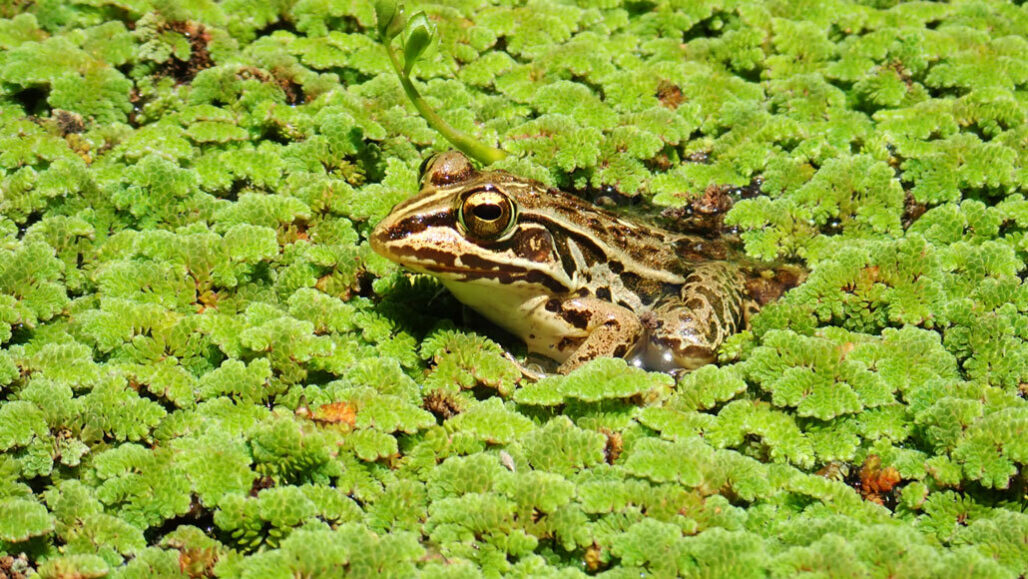Some beetles can be eaten by a frog, then walk out the other end
One crawled through an amphibian’s digestive tract in just six minutes

This pond frog (Pelophylax nigromaculatus) makes easy prey of water beetles. But one beetle species (Regimbartia attenuate) can escape predation. It travels through the frog’s digestive tract and emerges, still kicking, out the other end.
Shenji Sugiura
For most insects, the sticky, slingshot ride straight into a frog’s mouth spells the end. But not for one stubborn water beetle.
It doesn’t succumb to the frog’s digestive juices. Instead, the Regimbartia attenuata will travel down the frog’s throat, swim through the stomach and slide along the intestines. Afterward, it climbs out the frog’s butt, alive and well.
“This is legitimately the first article in a while that made me say, ‘Huh! How weird!’” says Crystal Maier. She’s an entomologist, or insect biologist, at Harvard University. She works at its Museum of Comparative Zoology in Cambridge, Mass. “There are still a lot of truly bizarre habits of insects that still wait to be discovered,” she says.
It’s not unheard of, but surviving digestion-by-predator is rare. Some snails survive the trip through fish and birds. They just seal their shells and wait it out. But this new research is the first to document prey actively escaping out the backside of a predator. It was published August 3 in Current Biology.
Shinji Sugiura regularly feeds beetles to predators to see what happens. He is an ecologist at Kobe University in Japan. In 2018, he discovered bombardier beetles can force toads to vomit them back up. The beetles start the process by releasing a mix of hot, noxious chemicals from their rear ends.
Sugiura had a hunch that R. attenuata might have evolved its own evasive tactics. In his lab, he paired one of these beetles with a frog that the insect often sees while swimming through Japanese rice paddies. Then he watched.
The frog quickly downed the unsuspecting beetle. The frogs lack teeth, so the beetle didn’t get crunched. A trip through the frog’s acidic, oxygen-poor digestive system, though, should be enough to kill the insect. But as Sugiura watched, he saw the shiny black beetle slip out from the frog’s butt. Then the insect scurried away, seemingly unharmed.
“I was very surprised,” he says. “I was expecting that the frogs might just spit out the beetles or something.”
Sugiura watched more than 30 more beetle-frog match ups. He found that more than nine in every 10 beetles survived being eaten. They greatly outshined other animals known to survive digestion-by-predator. Those creatures typically survive fewer than two times in 10. Most beetles complete the trip within 6 hours. One intrepid beetle, though, made the journey in just six minutes!
To confirm that the beetles were actively escaping from the frog’s digestive tract, Sugiura fixed some beetles’ legs in place with sticky wax. None of these immobilized beetles survived. Their carcasses took a day or longer to pass through the frogs.
The beetle’s aquatic lifestyle likely prepared it to survive digestion, Sugiura now says. It has a streamlined, but sturdy, exoskeleton. This may shield the insect from digestive juices. The beetle can also breathe underwater via air pockets tucked under its hardened wings. This likely prevents suffocation.
Sugiura plans to test the limits of the beetle’s abilities by pairing the insect with larger frogs, toads and even fish. “I’m looking forward to finding unimaginable types of antipredator defense,” he says.







